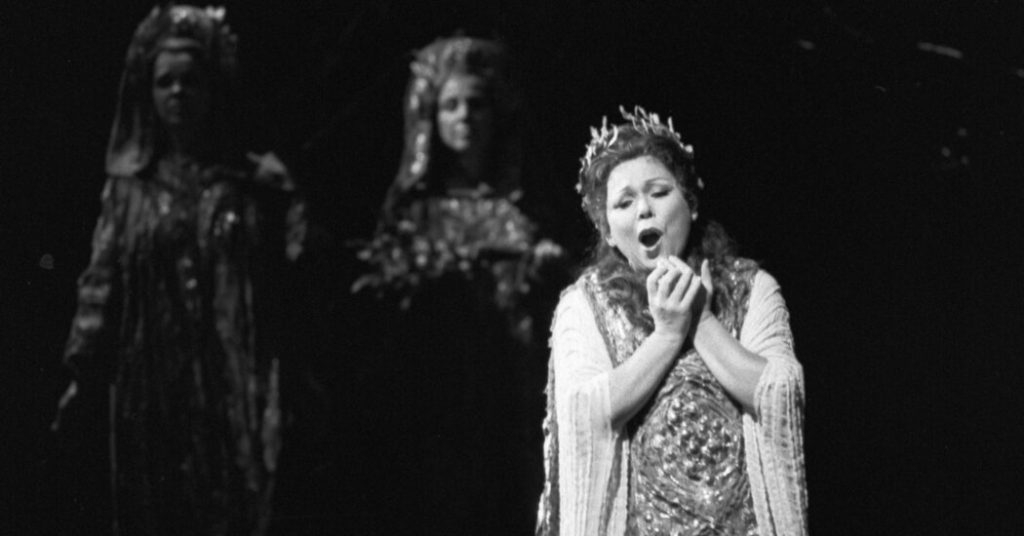Renata Scotto Spun an Actor’s Insight Into Vocal Gold

Scotto contained multitudes, and that extended to her vocal categorization, too. Was she a leggiero, a lyric, a spinto? She was all and none. Some have described her as a lyric by fach and a spinto by temperament, attributing her vocal decline — inevitable for any singer — to the irreconcilability of the two. Her astonishing piano high notes in dramatic music, the unforced warmth of her middle register, the plangency of her tone, the controlled force at the top of the staff, nonetheless speak to a formidable technique.
Her Cio-Cio-San in Puccini’s “Madama Butterfly,” preserved on two studio recordings, exploits the permeable boundary among those voice types. “Puccini gives to Butterfly everything possible to do for a singer,” she once told an interviewer. “She has to have a beautiful lyric voice, she has to have a huge dramatic voice.” The 1978 recording with Lorin Maazel bears that out: Her Cio-Cio-San, steeped in a romantic fantasy that turns increasingly bleak, alternates among a ravishing head voice, lacerating outbursts and a radiantly balanced middle register. The progress is not linear; her voice responds to hopes and doubts that the heroine continually surfaces and suppresses.
Scotto’s morbidezza — her ability to inflect her middle voice with captivating softness — was arguably her most impressive quality. It’s hardly the flashiest weapon in the arsenal of a singing actress, but it represents its own kind of daring — the courage to lower the volume and expose one’s tenderness. Violetta’s “Ah! dite alla giovine” in “La Traviata” was written for it. But, Scotto reveals, so was much of Desdemona’s music in Verdi’s “Otello”: Her vocal lightness imbued the Act I love duet with the unguarded charm of an open heart and then turned fragile, even fateful, in the Act IV “Willow Song.”
Scotto was aware that her singing wasn’t perfect. At full volume, her top notes rarely cooperated with her. At her best, she could harness and focus their power, but too often they careened in hair-raising ways. In florid music, her pitch wasn’t always true, but when a musical phrase was repeated, you could hear her correct herself and tune those pesky staccatos. She was an alert listener to others — her expressive face registering subtle reactions to her co-stars onstage — but also to herself.
It’s also fascinating to hear her respond to Riccardo Muti’s conducting in their 1980 recording of “La Traviata.” His simmering drinking song elicits from Scotto a sense of the danger that could engulf the defiant Violetta. The Act I finale, pensive yet propulsive, is full of haunted, pale-gold tone, and Alfredo’s dramatically implausible offstage cries suddenly make sense: This Violetta is tormented by her lover’s ghostly presence in much the same way Lucia is in her mad scene.
This is the kind of work Scotto did. She deployed a malleable voice and a sense of taste that could transcend styles to find a through line for heroines like Mimì, Desdemona, Cio-Cio-San and Violetta. She connected the dots to reveal something beautiful, yes, but also somehow new and true.





